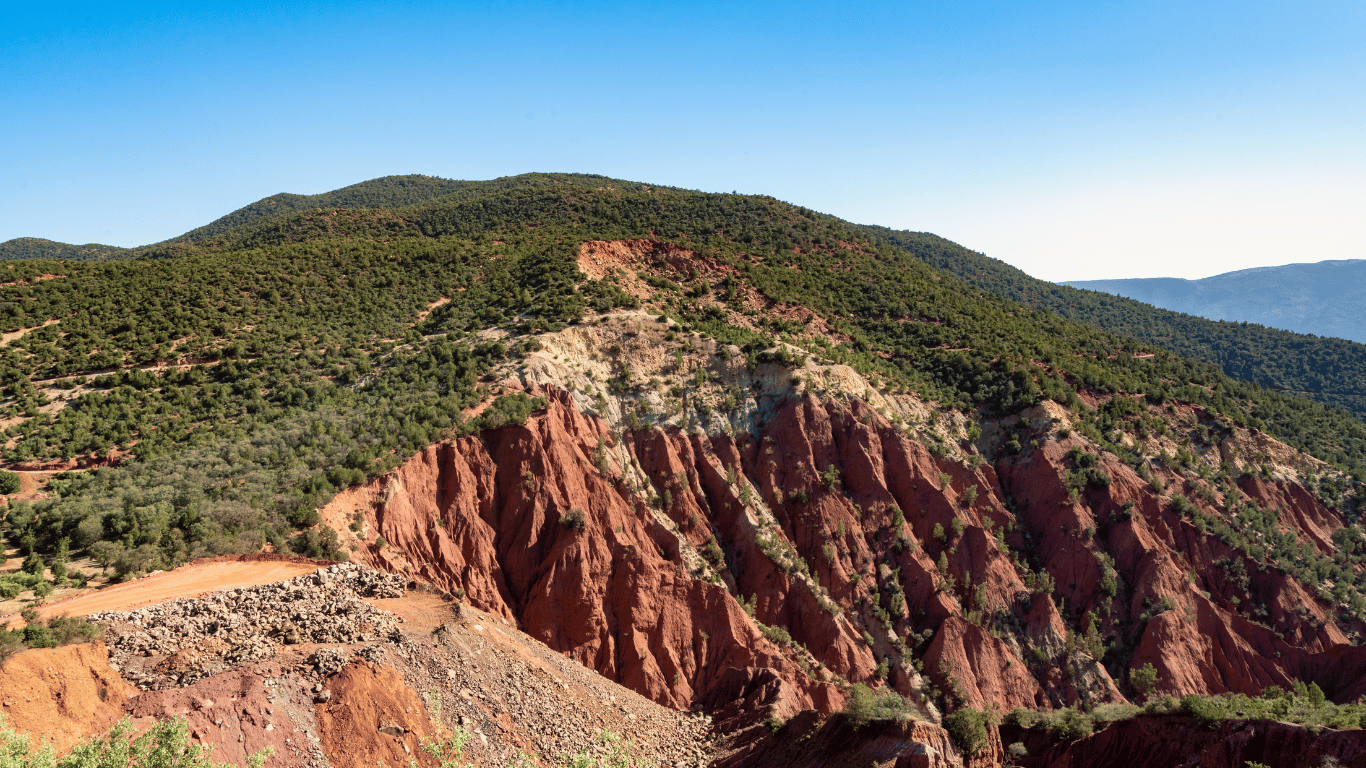Table of Contents
Emerging from the bustling plains of Africa, the Atlas Mountains are an awe-inspiring spectacle. This cradle of geological wonders, extending across three countries, carries with it an intricate and fascinating history. Geologists believe that the birth of this sprawling mountain range is closely tied to the tectonic activities between the African and Eurasian plates.
Over 80 million years ago, these two colossal plates began to converge. The African plate, journeying northward, collided with the Eurasian plate. This intense clash led to the earth’s crust folding and uplifting, creating the foundation for what we now know as the Atlas Peaks.
The Atlas Peaks are also renowned for their rich mineral wealth. From iron and lead to zinc and copper, the mountain range houses an abundance of precious resources, a testament to its vibrant geological past.
Biodiversity Spectacle in the Atlas Range
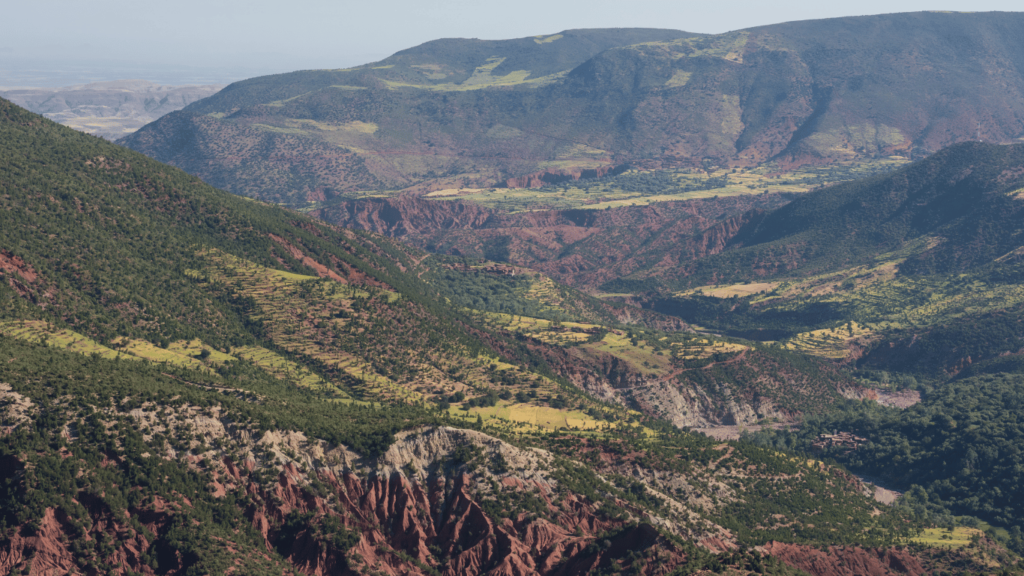
As you venture further into the Atlas Range, you’ll encounter a kaleidoscope of life that adds color to these towering peaks. The biodiversity present here is truly remarkable, a testament to the resilience of nature in the face of varying climates and altitudes.
The Atlas Range act as a sanctuary for numerous endemic species – species that are not found anywhere else in the world. The endangered Barbary macaque, for instance, finds refuge amongst the cedar forests, its natural habitat. Other iconic species include the Atlas bear, unfortunately now extinct, and the majestic Atlas lion.
Vegetation also varies drastically within the mountain range, from the olive trees and date palms at lower altitudes to evergreen oaks and junipers higher up. The varied climate and altitudes across the Atlas Peaks have resulted in unique pockets of ecosystems, each boasting a distinct collection of flora and fauna.
The Atlas Peaks Climate: A Window to Weather Patterns
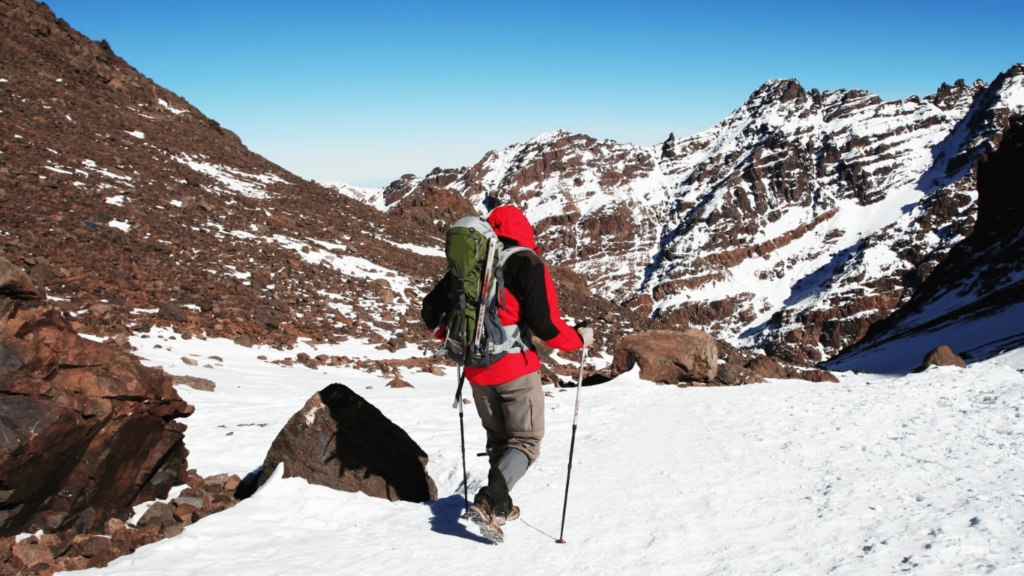
Unraveling the mystery of the Atlas Range involves decoding its complex climatic patterns. A unique blend of Mediterranean and African influences shape the Atlas Mountain climate, creating a tapestry of weather conditions.
At lower altitudes, the Atlas Peaks display a typical Mediterranean climate characterized by hot, dry summers and cool, wet winters. This climate nurtures lush deciduous forests and enables the cultivation of various crops such as olives and figs.
As you ascend higher, temperatures drop, and the landscape changes dramatically. Here, the winters can be harsh, with heavy snowfall that cloaks the mountains in white. This alpine climate fosters coniferous forests and provides ideal conditions for winter sports activities, a growing attraction for tourists.
Mosaic of Time: Atlas Peaks in the Pages of Moroccan History
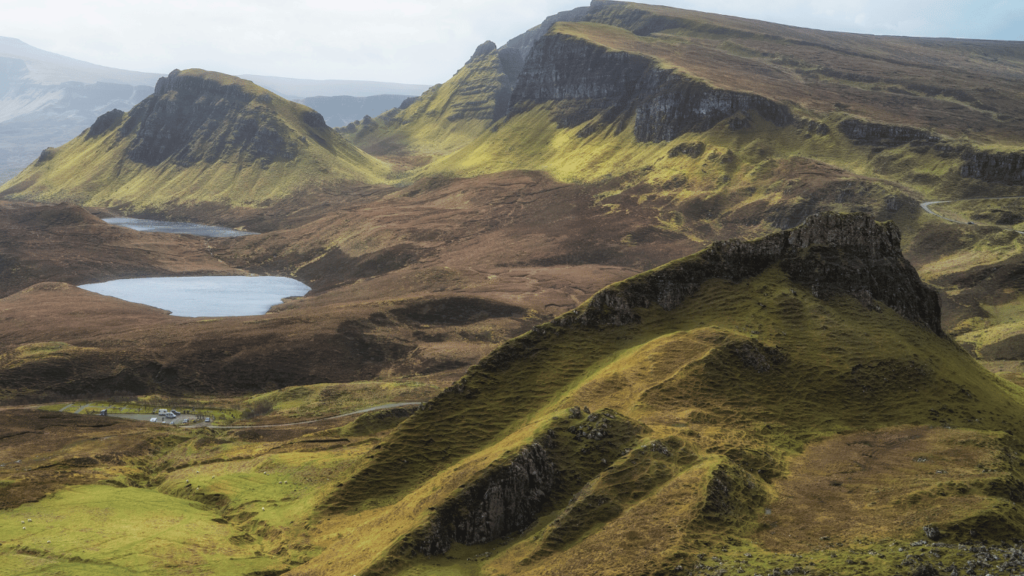
Peeling back the layers of time, the Atlas Peaks are deeply entwined with the historical narrative of Morocco. The mountains have been a cradle for ancient civilizations, a battleground for empires, and a refuge for different cultures.
In ancient times, the Berbers, or the Amazigh people, established their civilization in these mountains. Their resilient nature and deep knowledge of the land allowed them to thrive in harsh mountainous conditions. These indigenous communities have left an indelible mark on Moroccan culture, from language and cuisine to art.
The Maghreb mountain range also played a significant role during the Islamic conquest of North Africa. The region’s strategic location made it a critical point of contention for control and power. The mountains’ fortified peaks and hidden valleys offered a natural defense, shaping the outcome of many historic battles.
In more recent history, the Maghreb mountain range played a key role during the French protectorate era. It was the site of resistance movements and a symbol of national identity, shaping the history of Morocco and molding its future.
Echoes of Amazigh Traditions in the Atlas Mountain Ranges
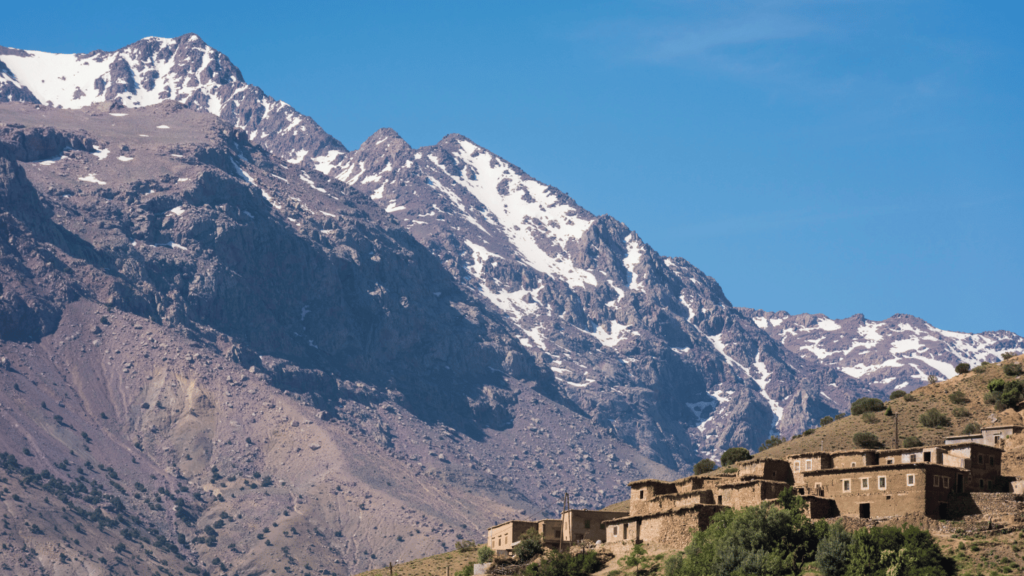
Immersing ourselves in the heart of North Africa, we encounter the captivating essence of the Amazigh, or Berber, people. Their deep-rooted traditions have echoed through the valleys and peaks of the Atlas Mountains for centuries. The soulful Amazigh culture is embedded in their spoken and written languages, and their strikingly geometric tapestries.
The Amazigh language, also known as Tamazight, is deeply intertwined with the region’s landscapes. Tamazight is primarily an oral language, passed down through generations, encapsulating ancestral wisdom. It is an emblem of identity that unites numerous tribes across the Atlas range. The written script, the ancient Tifinagh, can be seen etched onto rocks, walls, and artifacts. Its unique characters bear testament to a culture that has persisted through changing times.
Amazigh, traditionally played on the Rabab and Bendir, resonates with the vibrancy of life and ruggedness of the mountains. The traditional Ahidous dance, performed in group circles, tells tales of harvest, battles, and daily life. Often, these celebrations culminate in grand feasts where Amazigh culinary staples like couscous and tagine take center stage.
Architectural Gems and Cultural Heritage in the High Atlas
The High Atlas region presents an extraordinary repository of architectural wonders. From sprawling kasbahs to quaint hamlets, these structures reflect the heritage and cultural identity of the inhabitants. These architectural gems mirror the wisdom of adapting to the rugged terrain and harsh climate of the mountains.
A quintessential example of this is the Kasbah du Toubkal, majestically situated amidst the peaks. This fortress-like structure, crafted out of mud and stone, boasts a unique blend of functional simplicity and aesthetic charm. The Kasbah, with its high walls and narrow windows, is perfectly adapted to the High Atlas’s intense sunlight and winter chill. The flat roofs, utilized for drying crops and enjoying the summer nights, reveal a lifestyle intertwined with nature.
Similarly, the Amazigh villages, or ‘them’ are stunning examples of organic, sustainable architecture. Built on hillsides, these terraced settlements are ingeniously designed to avoid erosion, maximize arable land, and ensure communal living. The houses, made of local materials such as stone, earth, and wood, are a testament to a sustainable lifestyle that is conscious of its ecological footprint.
Sacred Spaces: Shrines and Religious Landmarks in the Atlas Range
Religion plays a significant role in the life of the Amazigh people of the Maghreb mountain range, with many sacred sites and religious landmarks dotting the landscape. These shrines, often located in remote, high-altitude places, are believed to be the dwelling places of saints or ‘marabouts’. They serve as places of worship, pilgrimage, and gathering for the community.
Among the notable religious sites is the shrine of Sidi Chamharouch, en route to Mount Toubkal, the highest peak in North Africa. Believed to be a king of the jinn, Sidi Chamharouch is worshipped by locals for his healing powers. The shrine, marked by a large painted rock, is a popular stop for mountaineers and pilgrims alike.
Similarly, the village of Moulay Brahim, located near Marrakech, houses a famous shrine dedicated to the revered saint, Moulay Brahim. Every year, this site draws thousands of pilgrims, including numerous newlyweds seeking blessings for their marital life.
Wandering Spirits: Nomadic Lifestyle and Migration Stories
The Atlas Mountains are also home to a compelling chapter of human geography: the nomadic lifestyle. The semi-nomadic Ait Atta tribe, one of the largest Berber tribes, traverses the vast landscapes following age-old migration routes. They move in harmony with nature’s rhythm, seeking pastures for their livestock with the changing seasons.
Life as an Ait Atta nomad is characterized by simplicity and resilience. Their homes are traditional tents or ‘azib’, made from woven goat hair. Their sustenance comes from their herds of sheep and goats, providing milk, meat, and wool. Bread cooked on open fires, mint tea, and seasonal fruits supplement their diet.
However, this nomadic lifestyle is not without challenges. The extremes of the Atlas weather, scarcity of water, and modernization’s encroachment pose significant threats. Despite these adversities, the nomads of the Atlas continue to wander, their spirits undeterred, echoing stories of a lifestyle that has withstood the tests of time.
Throughout this journey of the Maghreb mountain range, we’ve ventured into the heart of the Amazigh traditions, admired architectural marvels, paid respect to sacred shrines, and walked alongside nomads. Each of these aspects offers an enriching narrative that resonates with the resilience and diversity of the human spirit.
Rural Charm: Exploring Remote Hamlets of the Atlas
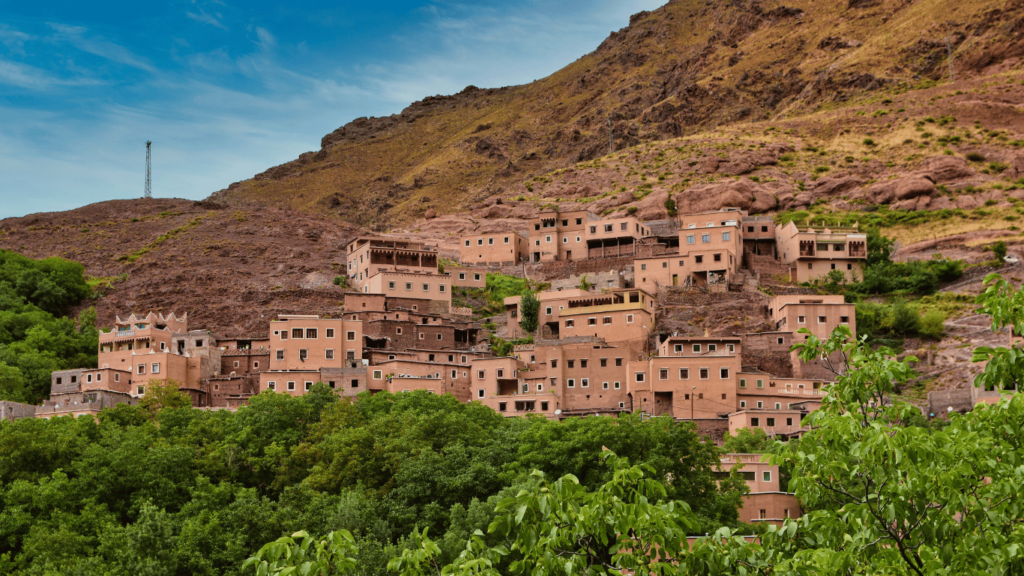
A journey into the Maghreb mountain range in Northern Africa is akin to stepping back in time, opening doors to a world steeped in rich traditions, unspoiled natural beauty, and heartwarming hospitality. Away from the city hustle, the remote hamlets sprinkled across this rugged landscape showcase a unique rural charm that leaves an indelible mark on those who venture to explore.
Life in Remote Atlas Hamlets
The Maghreb mountain range, home to an assortment of ethnic communities – predominantly Amazigh (Berbers), retains an almost ethereal rustic aura. The daily life in these remote villages, like the picturesque Ait Bouguemez or the tranquil Imilchil, remains heavily rooted in the rhythms of nature and seasons.
Local dwellers live in harmony with the land, cultivating a variety of crops, tending to their livestock, and practicing ancient methods of farming. You’ll often spot them laboring in the terraced fields, shepherding their flocks, or heading to communal ovens with dough for traditional bread, a sight that draws you into the simplistic, yet fulfilling way of life.
Hamlet Architecture: A Testament to Sustainability
The hamlets, with their organic architecture, seem to emerge naturally from the terrain, bearing testimony to the community’s resourcefulness and deep respect for nature. Constructed with local materials like mud, straw, and stone, these homes are a perfect example of sustainable living.
Inside, the houses are surprisingly cool during the day and warm at night, thanks to the thermal properties of their construction material. The functional design allows villagers to lead a self-sustaining lifestyle, often with gardens for fresh produce, rooftop spaces for drying fruits, and areas for housing livestock.
Celebrations in the Sky: Festivals Unique to the Atlas Mountains
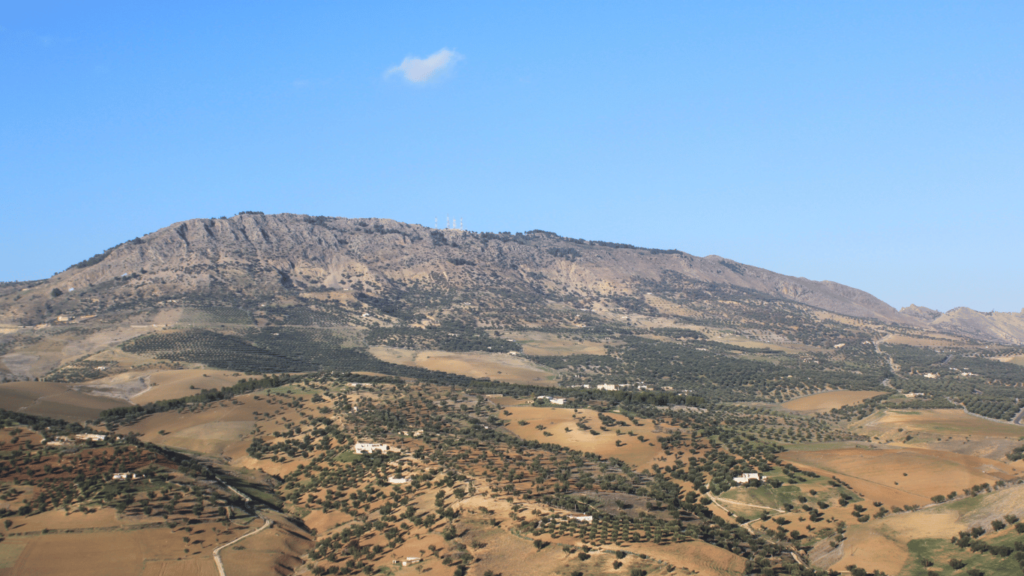
Cultural festivals are a vital part of life in the Maghreb mountain range They are times of joy, reflection, and connection, encapsulating the essence of the Amazigh culture. These unique celebrations often coincide with agricultural cycles and serve as a vibrant display of local customs and traditions.
Imilchil Marriage Festival
Perhaps the most well-known is the annual Imilchil Marriage Festival, or ‘Betrothal Fair.’ It’s a time when young Amazigh men and women choose their future spouses in a flurry of song, dance, and colorful costumes. The festival’s origins lie in a legendary star-crossed love story akin to Romeo and Juliet, lending it a romantic aura that captivates all who attend.
Yennayer: Amazigh New Year
Yennayer, the Amazigh New Year, is another significant event celebrated with much fanfare in the Atlas region. It marks the beginning of the agricultural year and is observed with communal feasts, uniting the community in a shared spirit of optimism and renewal.
Discovering the Past: Historic Sites and Timeless Ruins in the Atlas
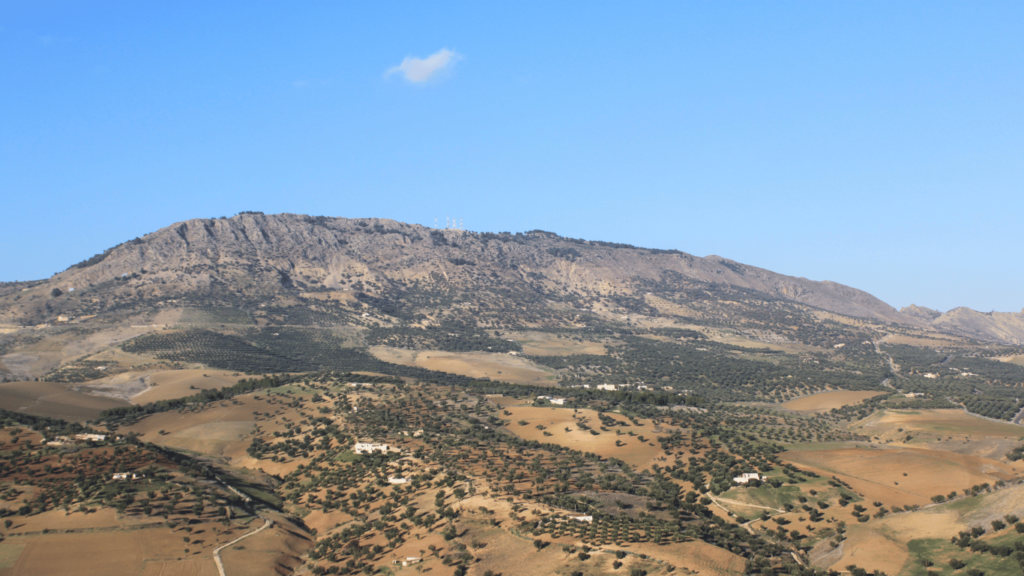
The Atlas Mountains house a wealth of historic sites and ancient ruins that transport you back in time. Each stone whispers tales of the region’s past civilizations and the mighty empires that once held sway.
Ksar Ait Benhaddou: A Cinematic Marvel
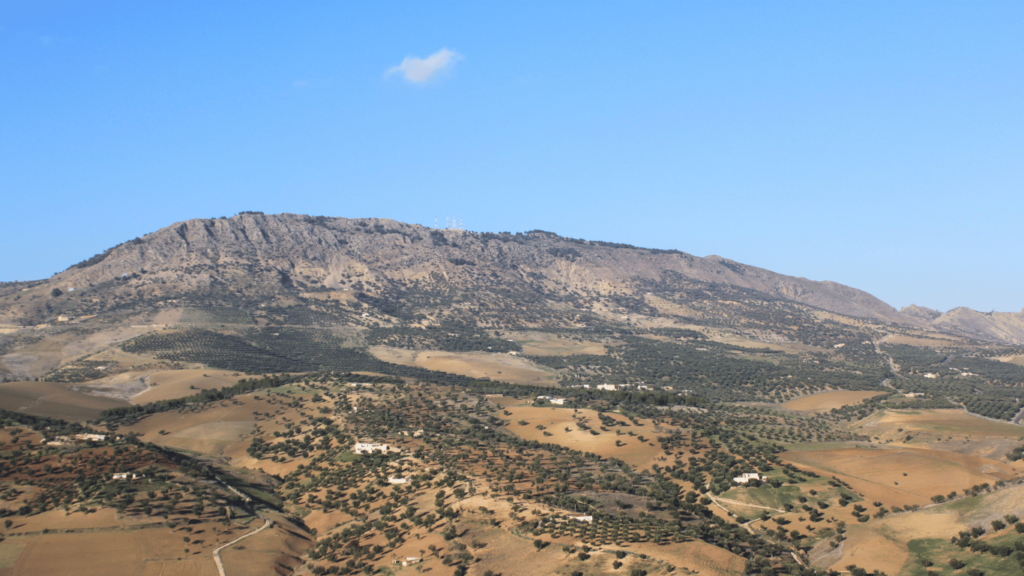
The fortified village or ‘Ksar’ of Ait Benhaddou is an iconic site. A UNESCO World Heritage Site, this earthen architectural ensemble of houses crowding against each other, is an excellent example of traditional Moroccan clay architecture. Its dramatic beauty has made it a favorite location for Hollywood films, including Gladiator and Game of Thrones.
Tin Mal Mosque: An Icon of the Past
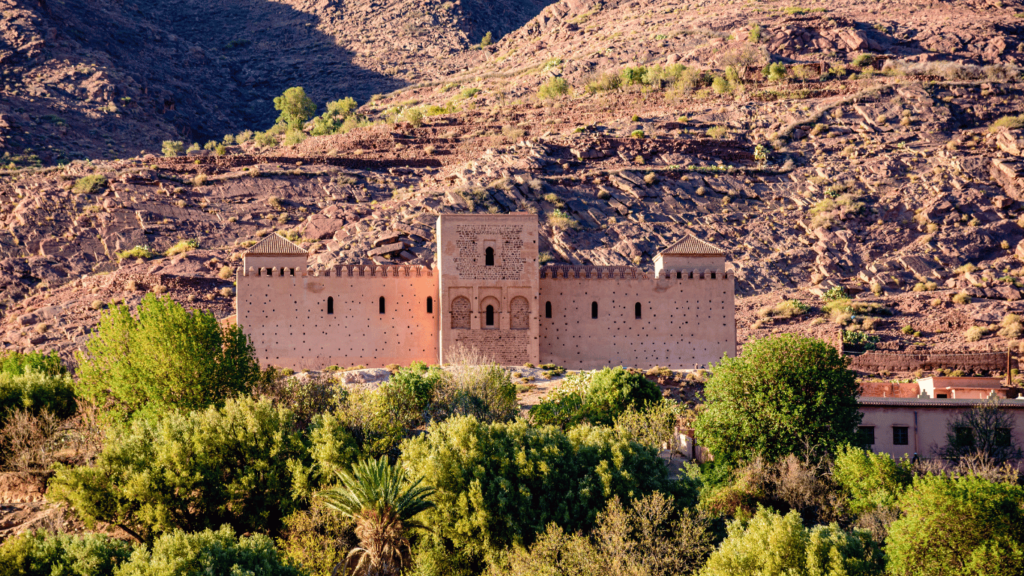
Tin Mal Mosque, tucked away in a high valley, is another must-visit. This 12th-century mosque was the original spiritual home of the Almohad dynasty that once ruled over Morocco. Its austere and commanding architecture paints a vivid picture of the past religious and political prowess.
Savoring the Local Delights: Culinary Journey through the Atlas
Embarking on a culinary journey in the Atlas Mountains is akin to diving into a melting pot of flavors. The local cuisine is a sensory delight that’s deeply tied to the land and seasons.
The Traditional Tagine
The iconic tagine, a slow-cooked stew named after the conical pot it’s cooked in, is a staple in Atlas gastronomy. Locals prepare it with an array of ingredients like lamb, chicken, fish, or vegetables, paired with locally grown herbs and spices. The result is a succulent, flavor-rich dish that’s best enjoyed with a side of warm bread.
Bread: The Heart of Atlas Cuisine
Speaking of bread, it holds a special place in Moroccan and specifically, Atlas culinary traditions. Whether it’s the round ‘khobz’ used to scoop up tagine or the flat, crispy ‘rghaif’ enjoyed with honey and butter, bread is a ubiquitous and essential part of meals.
Mint Tea: The Moroccan Whiskey

No culinary journey in the Atlas Mountains is complete without savoring the famous Moroccan mint tea. Often referred to as ‘Moroccan whiskey,’ this sweet, mint-infused green tea is a symbol of hospitality and is served throughout the day.
Through the remote hamlets, unique festivals, historic sites, and tantalizing cuisine, the Maghreb mountain range offer an immersive experience into a world where tradition, culture, and nature harmoniously converge. This journey into the heart of Atlas is sure to leave you with a richer understanding of its unique charm and enduring allure.
Artistic Impressions: Traditional Crafts and Souvenir Ideas
When we immerse ourselves in the vibrant tapestry of the Maghreb mountain range, it’s impossible not to be enchanted by the artistic flair and craftsmanship of the local people. The rich artistic heritage that imbues these towering slopes is as enduring as the mountain range itself.
The Atlas Mountains’ heart beats in the rhythm of the weaver’s shuttle and the potter’s wheel. Artistic impressions from the Maghreb mountain range are steeped in centuries-old traditions, with each piece narrating a tale of the region’s cultural heritage. Traditional crafts play a significant role in their daily life, from intricately woven Berber rugs to delicately crafted silver jewelry, each embedded with symbols echoing ancient Amazigh lore.
No visit to the Maghreb mountain range is complete without stepping into a local craft market or cooperative. Here, you can witness artisans breathing life into beautiful crafts, from hand-loomed textiles adorned with geometric patterns to the creation of vibrant pottery and ceramics, infused with the earthy palette of the Atlas terrain.
Shopping for souvenirs in the Maghreb mountain range isn’t just about acquiring mementos. It’s an experience that allows you to connect with the locals, their traditions, and the very soul of the Maghreb mountain range. Each craft embodies the local people’s spirit, making it more than just a souvenir—it becomes a piece of the Atlas that you can take home.
Economic Backbone: The Atlas Mountains’ Contribution to the Local Economy
A conversation about the Maghreb mountain range is incomplete without recognizing their contribution to the local economy. These towering peaks form not just the physical, but also the economic backbone of the regions they traverse.
The Maghreb mountain range is a life-giving force, supporting countless communities that depend on agriculture, livestock rearing, and tourism for their livelihoods. The fertile valleys of the Atlas are perfect for cultivating a variety of crops, including olives, almonds, and other fruits, contributing significantly to Morocco’s agricultural yield.
Furthermore, the Atlas Mountains are rich in mineral resources, including lead, zinc, and phosphates, fueling industries and providing employment to locals. The traditional crafts mentioned earlier, from textiles to pottery, also form an essential part of the economy, bringing in revenue and preserving cultural heritage.
Tourism, however, remains one of the primary economic drivers, with visitors flocking to experience the Maghreb mountain range’ unique blend of natural beauty and cultural richness. Whether for trekking, exploring historical sites, or skiing, the influx of tourists provides income to local communities, while reinforcing the importance of conserving this unique ecosystem.
Embracing the Adventure: Outdoor Experiences in the Atlas Mountains
Adventure is the heart of the Atlas Range experience. For the outdoor enthusiast, the Atlas Peaks are a playground of natural wonders, from challenging treks and mountain biking routes to placid bird-watching opportunities and peaceful wildflower hikes.
Whether you’re an adrenaline junkie or a nature lover, the Atlas Hills cater to every inclination. High-altitude trails provide breathtaking vistas and thrilling encounters with the wild, while the serene valleys and picturesque Berber villages offer peaceful retreats. The legendary Toubkal, North Africa’s highest peak, is a must-try for serious trekkers, promising an unforgettable ascent amidst snow-capped peaks and azure skies.
Yet, the thrill of exploration persists even as dusk descends. Nights in the High High Atlas Mountains are a treat for astronomy enthusiasts, where the clear, unpolluted skies offer a dazzling display of constellations.
Wintry Wonders: Ski Destinations in the Moroccan Atlas
As winter descends, the Atlas Plateau transforms into a wonderland of snow-clad slopes, making it a premier destination for ski enthusiasts. The snow-covered Atlas peaks offer a unique African ski experience that contrasts with the sandy desert dunes just a few hundred kilometers away.
The most famous ski resort is Oukaïmeden, perched high in the High Atlas. It’s equipped with several ski lifts and has a range of slopes catering to beginners and experienced skiers alike. Another popular spot is Michlifen, often referred to as “Little Switzerland”, known for its charming chalets and reliable snow cover.
Skiing in the Atlas Peaks is about more than the exhilarating rush down the slopes—it’s a chance to experience the mountains’ awe-inspiring beauty during winter, an experience amplified by the warm hospitality of the local communities.
Exploring the Majestic Atlas Hills: Hiking Insights, Photogenic Locales, and Sustainable Tourism

Pathways to the Peaks: Hiking and Trekking Insights for the Atlas Range
The Atlas Mountains, an expansive range spanning three countries – Morocco, Algeria, and Tunisia – offer an unparalleled hiking and trekking experience. Their unique geography, coupled with the fascinating cultural and historical insights these peaks provide, makes a visit to these mountains an unforgettable adventure.
To kick off your Atlas expedition, you should be familiar with some of the most popular and rewarding hiking trails in the region. The Toubkal Circuit, for instance, is one of the most revered routes. Mt. Toubkal, the highest peak in the Atlas Hills, provides a challenging but rewarding trek, culminating in an absolutely breathtaking panoramic view of the entire mountain range.
Then there’s the M’Goun Massif, another trekking highlight in the Central High Atlas. This route is perfect for those seeking a less crowded trail with incredible scenic beauty. The trail meanders through a variety of landscapes including deep gorges, lush valleys, and traditional Berber villages, providing hikers with an authentic Atlas experience.
Prior to setting off on your trekking journey, it’s imperative to ensure you are fully equipped and prepared. Comfortable and durable hiking shoes, layered clothing to accommodate the mountain’s fluctuating temperatures and plenty of water are essential items. Also, hiring a local guide can enhance your trekking experience by providing local knowledge and ensuring your safety during the hike.
Capture the Magic: Photogenic Spots in the Atlas Range
The Atlas Hills is an absolute feast for the eyes, and for photography enthusiasts, it’s akin to a veritable paradise. The panoramic landscapes, coupled with vibrant local culture, make for incredibly dynamic and visually arresting photographic opportunities.
One of the most photogenic spots in the Atlas Mountains is the Dadès Gorge, located between the Atlas and the Jbel Saghro of the Anti Atlas. Its stunning rock formations and the beautiful Dadès River winding through the deep gorge provide unmatched scenic beauty that begs to be captured on camera.
The town of Aït Benhaddou, a UNESCO World Heritage Site, is another photogenic location. Its stunning earthen clay architecture, ancient kasbahs, and panoramic views of the surrounding landscape make it an ideal spot for both landscape and cultural photography.
Moreover, the high-altitude village of Imlil offers panoramic views of the snow-capped Atlas Peaks, a sight that can render even the most seasoned photographers speechless.
Nurturing Nature: Conservation Initiatives in the Atlas Mountains
The Atlas Plateau‘s incredible biodiversity and unique ecosystems make it a vital region for conservation efforts. With many indigenous plant and animal species, the Atlas Range has been at the heart of various local and international conservation initiatives.
One such initiative is the work carried out by the High Atlas Foundation (HAF). This non-profit organization aims to promote sustainable development through initiatives such as organic agriculture, women’s cooperatives, youth development, and clean drinking water. By focusing on community-led development, HAF is making a significant difference in conservation and sustainable development in the Atlas Mountains.
The Moroccan Association for Ecotourism and Nature Protection is another active organization in the region, dedicated to protecting the natural resources of the Atlas Peaks while promoting eco-friendly tourism Tours from Marrakech
These and other initiatives demonstrate how the Atlas region is recognizing and addressing the critical importance of protecting its natural heritage for future generations.
Greener Getaways: Promoting Sustainable Tourism in the Atlas Mountains
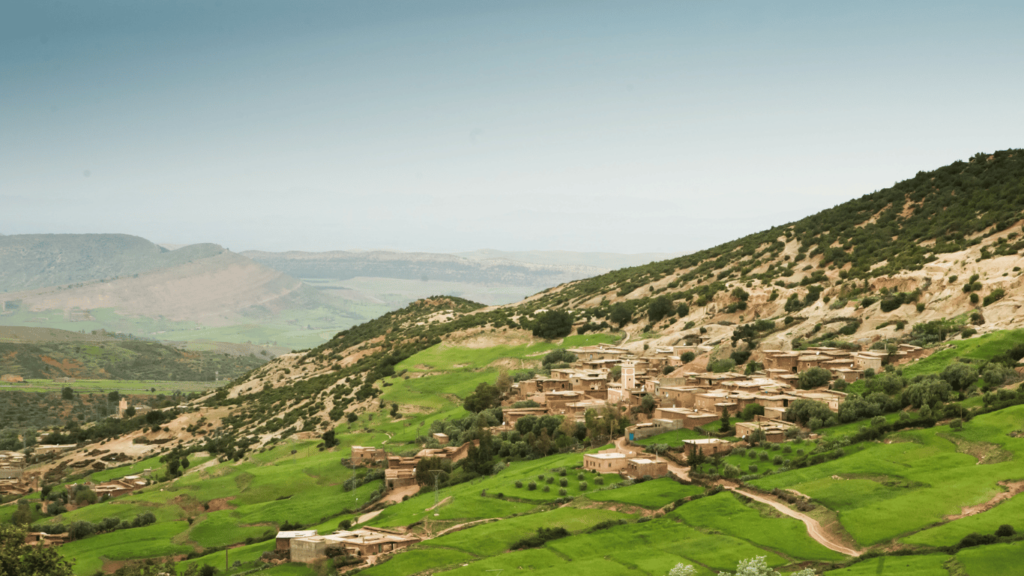
In line with the global trend towards responsible travel, the Atlas Mountains are seeing a growing interest in sustainable tourism. The concept is simple yet profound: ensuring that tourism development in the region is done in a way that minimally impacts the environment and local communities while providing tourists with a fulfilling and meaningful experience.
Numerous eco-lodges and tour companies operating in the Atlas region adhere to sustainable practices, offering environmentally conscious accommodations and activities. The Kasbah du Toubkal is a prime example of such an eco-lodge, located in the heart of the High Atlas. They emphasize local employment, respect for the environment, and community engagement.
Tour companies such as Journey Beyond Travel and Atlas and Sahara Tours also emphasize sustainable practices, such as minimizing waste, respecting local customs, and providing education about local ecology and conservation efforts.
These efforts at sustainable tourism help preserve the natural and cultural wonders of the High Atlas while still providing visitors with an unforgettable experience. They are an integral part of maintaining the region’s unique charm, ensuring that it can be enjoyed by generations to come.
Ultimately, the Atlas Range offers something for every traveler: stunning hiking trails, photogenic landscapes, and an emphasis on sustainable tourism. Whether you’re a hiking enthusiast, a photography lover, or a conscientious traveler, the Atlas Mountains promise an experience as majestic as the peaks themselves.
Conclusion
The Atlas Peaks, stretching across the vast landscapes of Africa, encapsulate an enticing amalgamation of geological wonders, rich biodiversity, unique climate patterns, profound historical narratives, and vibrant cultural traditions. From the birth of this majestic mountain range through the collision of tectonic plates to the enduring legacy of the Amazigh people, the Atlas Hills bear testimony to the enduring and evolving saga of our planet and human civilization.
The mountains’ architectural masterpieces, sacred religious sites, nomadic lifestyles, rustic hamlets, and historic ruins further enrich this fascinating narrative. The traditional festivals and culinary delights offer a captivating window into the spirit of the Amazigh community, while the diverse ecosystems underscore the incredible resilience of nature. The Atlas Mountains, thus, stand as a testament to the incredible tapestry of life, culture, and history, inspiring a sense of awe and respect for the enduring interplay between nature and human endeavor.

